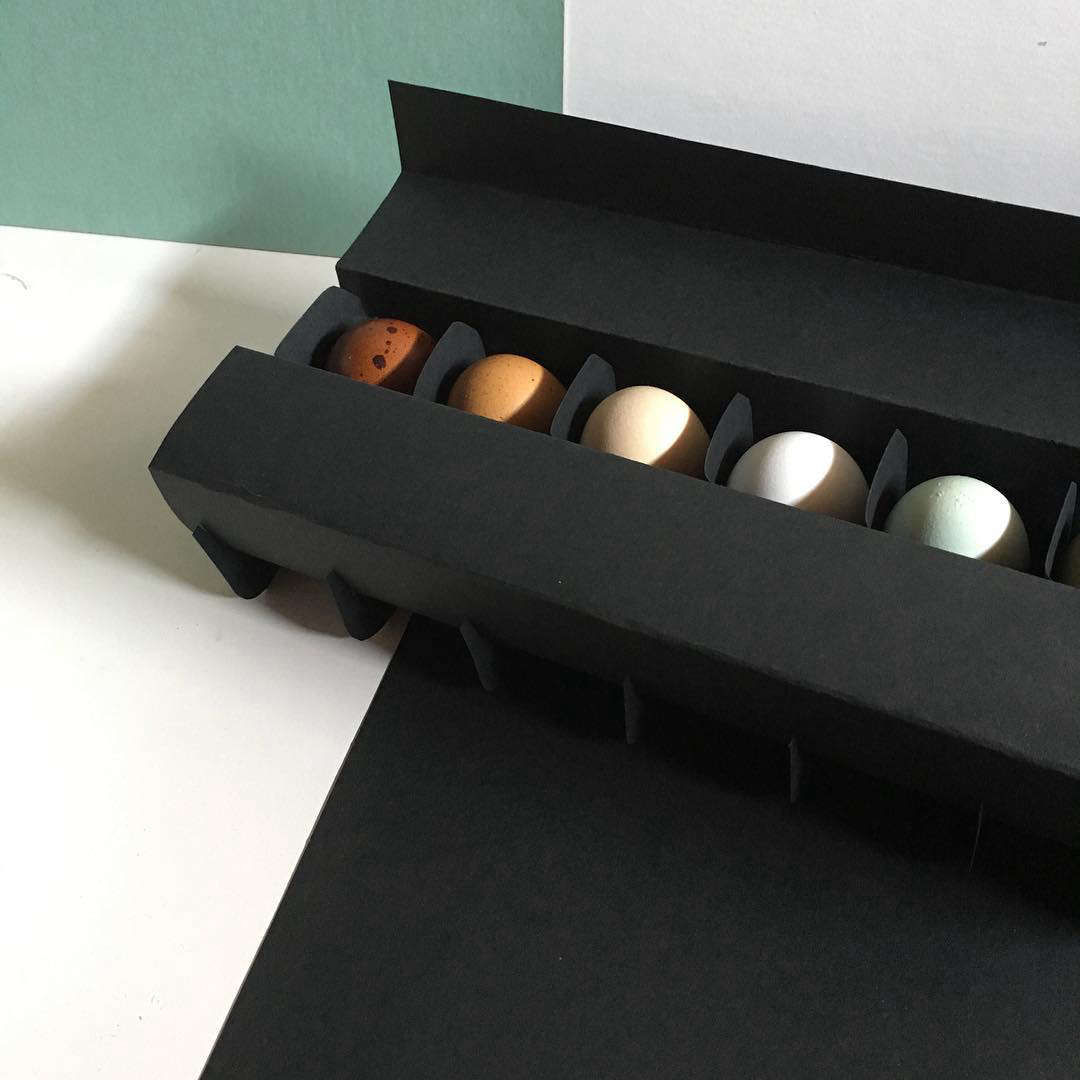
Eggs already come in what is surely one of nature’s most inspired versions of packaging.
Photography by Caity Delphia of The Fancy F.
She and her partner, Aaron Dunn, a landscape designer, together own and run The Fancy F, a year-old, 15-acre enterprise in Hillsdale, in New York’s Hudson Valley, where they raise heritage and rare-breed chickens that produce colorful eggs.
An Easter-ready sampling from the Fancy F. Delphia and Dunn produce eggs in six shades: olive, blue-green, white, light brown, dark brown, and chocolate.
The Eggs
The cleanup is still in progress, but they’ve been able to significantly increase production (they raise six varieties of chickens, plus a small herd of Nigerian spotted goats, mini donkeys, and Randall cows) while still holding down their day jobs.
The farm’s green eggs come in two tones: “true olive” and “minty.” They’re bred mostly from Marans and Araucana crossbreeds.
Above:”I wanted to really push the visual presentation of what one dozen eggs could be,” Delphia says.
Delphia designed her cartons to have “a wonderful reveal.” Her chevron pattern is an abstracted version of the subtle lacing known as birchen that some birds have on their necks.
Shades of palest green and blue from a variety of chickens: Araucana (the breed made famous by Martha Stewart and her paint colors), Crested Cream Legbar, and Sapphire (“ours are F2s, which makes them extra special”).
Fancy F eggs are available at the Copake General Store in Copake, New York, and in NYC at Foragers, which has locations in Chelsea and Dumbo.
A silkie hatchling: Delphia and Dunn keep two 30-egg incubators in their basement.
The Chickens
The Fancy F’s white-egg layers are three spotted varieties, from left: a Silver-Spangled Hamburg, Exchequer Leghorn, and Appenzeller Spitzhauben (“which have fantastic mohawks”).
Louis, a Lemon Cuckoo Standard Cochin rooster, was “the most wonderful rooster of all time—and the only one of his breed in the US.” Delphia reports he died last month, “but we have his son here and are hoping we can keep the population going.”
Delphia’s portrait of their Frizzled Paint Standard Cochin: “I thought she looked like a peony, so I put her next to a bunch for comparison.”
Dunn designed and built the farm’s mobile coop on site and scaled it to fit on a found wheel base from an old hay wagon.
The Coop
Dunn finished the coop with local hemlock and white cedar shingles (“we used underlayment shingles, which are cheaper than red cedar”). Along the way, however, there are a lot of casualties, mainly due to hawks.
The interior has enough space for around 100 birds (“it’s recommended that chickens have at least two square feet of ground room each,” says Delphia).
The feed they use—a mix of cracked seeds, corns, oats, soy, oyster shells, and minerals from a local granary—affects the yolk color but not the shell.
The coop sits in a pasture. Every week it gets shifted around the property, which enables the chickens to supplement their diet with grass and insects and also helps preserve and fertilize the land.